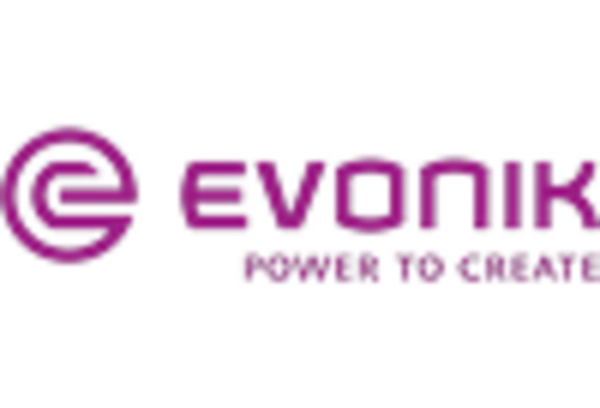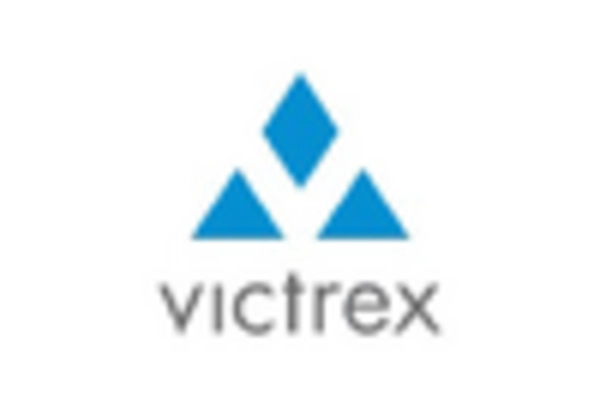Rising Demand in Electronics
The high temperature-thermoplastics market is experiencing a notable surge in demand from the electronics sector. As electronic devices become more compact and powerful, the need for materials that can withstand elevated temperatures without compromising performance is critical. High temperature-thermoplastics offer excellent thermal stability and electrical insulation, making them ideal for applications in circuit boards and connectors. The electronics industry in the US is projected to grow at a CAGR of approximately 5.5% through 2026, which is likely to further drive the demand for high temperature-thermoplastics. This trend indicates a robust market potential, as manufacturers seek materials that enhance device reliability and longevity, thereby propelling the high temperature-thermoplastics market forward.
Increased Focus on Sustainability
The high temperature-thermoplastics market is witnessing a shift towards sustainability, as manufacturers increasingly prioritize eco-friendly materials. The demand for recyclable and less environmentally harmful thermoplastics is on the rise, driven by regulatory pressures and consumer preferences for sustainable products. This trend is particularly evident in industries such as automotive and aerospace, where companies are seeking to reduce their carbon footprint. The US government has implemented various initiatives aimed at promoting sustainable manufacturing practices, which could potentially bolster the high temperature-thermoplastics market. As companies adapt to these changes, the market may see a diversification of product offerings that align with sustainability goals, thereby enhancing its growth prospects.
Growth in Energy Sector Applications
The high temperature-thermoplastics market is poised for growth due to increasing applications in the energy sector, particularly in renewable energy technologies. As the demand for energy-efficient solutions rises, high temperature-thermoplastics are being utilized in components for wind turbines, solar panels, and other energy systems. These materials are favored for their ability to withstand harsh environmental conditions and high temperatures, which are common in energy applications. The US energy sector is projected to grow significantly, with investments in renewable energy expected to reach $20 billion by 2026. This growth is likely to create substantial opportunities for the high temperature-thermoplastics market, as manufacturers seek materials that enhance the durability and efficiency of energy systems.
Expansion in Medical Device Manufacturing
The high temperature-thermoplastics market is significantly influenced by the expansion of the medical device manufacturing sector. With the increasing complexity of medical devices, there is a growing need for materials that can endure sterilization processes and high temperatures. High temperature-thermoplastics provide the necessary properties, such as biocompatibility and chemical resistance, which are essential for medical applications. The US medical device market is expected to reach approximately $208 billion by 2026, suggesting a substantial opportunity for high temperature-thermoplastics. This growth is likely to be driven by innovations in healthcare technology, which necessitate advanced materials that can meet stringent regulatory standards, thereby enhancing the high temperature-thermoplastics market.
Technological Innovations in Processing Techniques
The high temperature-thermoplastics market is benefiting from advancements in processing techniques that enhance material performance and application versatility. Innovations such as additive manufacturing and advanced injection molding are enabling the production of complex geometries and improved material properties. These technologies allow for the efficient use of high temperature-thermoplastics in various applications, including aerospace and automotive components. The US manufacturing sector is increasingly adopting these advanced techniques, which could lead to a projected growth rate of around 4.2% in the high temperature-thermoplastics market over the next few years. This trend suggests that as processing capabilities improve, the market may expand, offering new opportunities for manufacturers and end-users alike.

















Leave a Comment